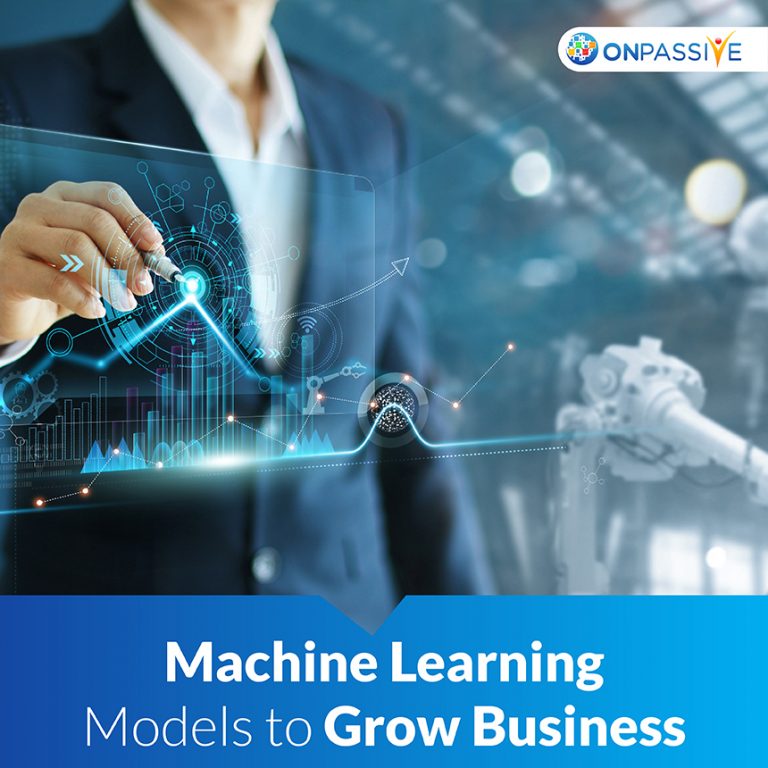
Non-stop growth in artificial intelligence is undoubtedly increasing the efficiency of business operations. Machine Learning (ML) analytics is simplifying various internal activities in an organization which were once considered impossible without human assistance. Machine Learning capabilities are evolving with every passing day and are bringing a new edge to business operations.
With highly result-oriented Machine learning models, businesses are now able to reach output targets not imagined before. Automating multiple organizational operations and creating sentient machines with an accurate response system Businesses are seeing an unprecedented level of growth in every sector.
Customer Retention Model
Customers are the backbone of any organization. With evolving market, customers have become smarter with their choices and preferences. The competitions are high in the market and no enterprise holds the power to stop a customer from choosing not to purchase from them or discontinue with an existing contract or subscription. This increases the customer churn rate.
According to HubSpot,
“Customer churn is the percentage of customers that stopped using your company’s product or service during a certain time frame.”
Customer churn rate is calculated by dividing the number of customers lost during a particular time duration by the number of customers had at the beginning of that duration. It is also known as customer attrition. High customer attrition rate, in most cases, indicates the inefficiency of the product or services offered by an enterprise. Increase in customer churn rate can directly influence the revenue and growth of a business.
A report by Harvard Business School states,
“decreasing the customer churn rate by even 5% can lead to an increase in profits by 25% to 95%.”
Customer churn might occur due to many reasons and losing customers is inevitable in a business point of view. However, if you want to retain your existing customers, it is of utmost importance to understand the factor that leads to customer attrition. Hence, a strong customer database and machine learning can be leveraged to develop an accurate customer retention model. Machine Learning can help organizations to get an idea of the end-to-end journey of every customer. This way, enterprises will be able to understand customer needs better and offer the best services according to their needs. Machine learning can also determine factors affecting customer churn, allowing them to learn from previous mistakes and develop better strategies to retain their existing customers.
Lifetime Value Model
It will be very helpful for any organization if they are able to determine the expected lifetime of a customer’s relationship with the organization and how much revenue will be generated by each customer. Knowing customer lifetime value (LTV) will guide companies to comprehend how customer attrition will affect the revenue of the company.
“Lifetime value, or LTV, is the total net benefit that a customer or group of customers provide a company over their total relationship with a company.”
Pareto Principle states that roughly around 20% of customers will invariably generate around 80% of a company’s revenue. When you effectively estimate the lifetime value of each customer, it will allow you to identify the high revenue-generating customers. Once you determine such valuable customers, you can reallocate your resources from low LTV customers and focus more on customers with revenue-generating and high lifetime values. However, conventional methods of calculating LTV are a huge time consuming and tedious activity. Here, Machine Learning plays a vital role.
Machine Learning analyses the historical data of each customer such as purchase history, preferences, and previous interactions with the company, and so on. Based on this information, ML can determine the expected lifetime of the customer and the revenue that the customer is likely to generate in this lifetime. It can also determine the expected lifetime value of a new customer by leveraging the historical data of other customers with similar behavioural patterns; overall, helping companies to centralize their efforts around high lifetime value customers.
Employee Retention Model
Employees are a significant part of an organization. They are the pillars whose capabilities and talent hold the organization in a tight spot. Employees can leave an organization for various reasons like low salary, unrecognized work, lack appreciation, overtime, age, travel distance, non-friendly environment, workload, and clash with the colleagues/manager and so on.
Employee turnover is inevitable in any organization. However, with the help of machine learning tools, organizations can analyse the performance of the old employees and figure out factors that led the employees to leave the organization. Based on this attrition factors, companies can develop strategies that can bridge the gap between the company and its existing employees, increasing the retention rate. Meanwhile, when new employees are hired for the same role, companies can take proactive strategies to prevent them from leaving the organization.
For example, if ML tool identifies overtime as a factor that led employee turnover, then companies can adjust the working time to counter the attrition. This way, machine learning tools can help organizations to build a productive work environment for both employees and the company.
Concluding Thoughts
When it comes to growing business, artificial intelligence and its components have become an inevitable force in the 21st century. Machine learning models with predictive analysis plays a significant role in the growth of any business, irrespective of the industry. ML tools enable organizations to analyse huge customer data and predict customer retention, their lifetime value and employee retention. Machine Learning tools help companies to understand their loopholes, and maximize productivity and revenue by unleashing the true potential.


